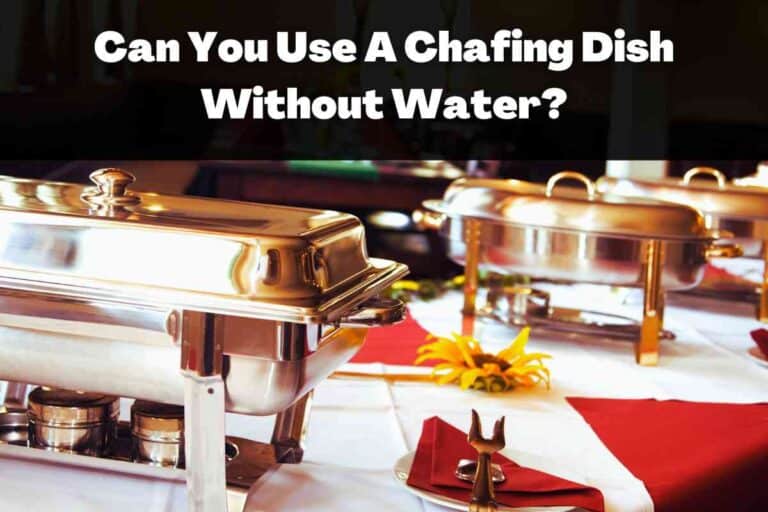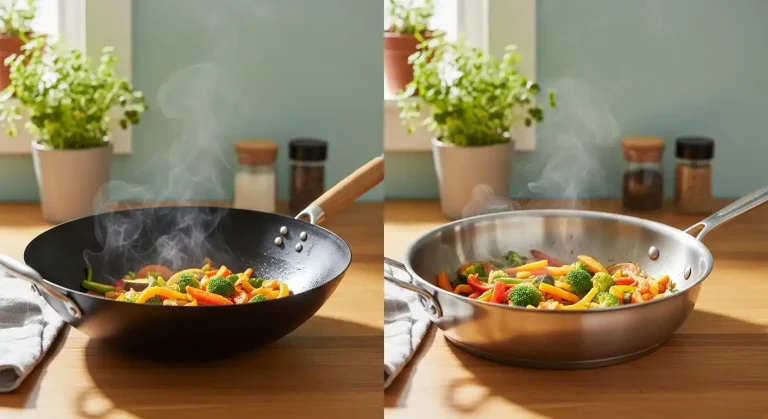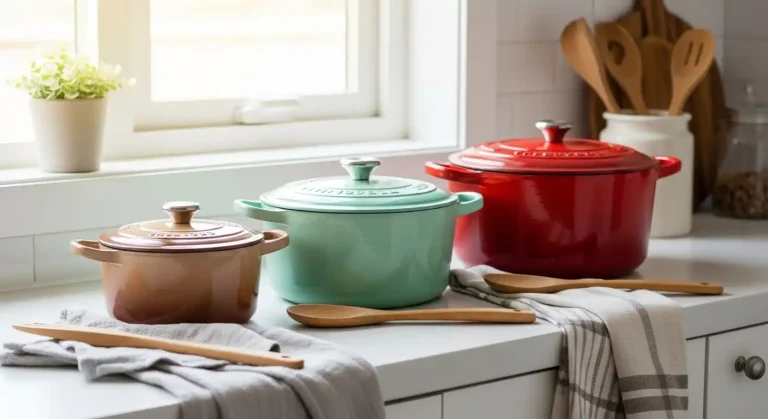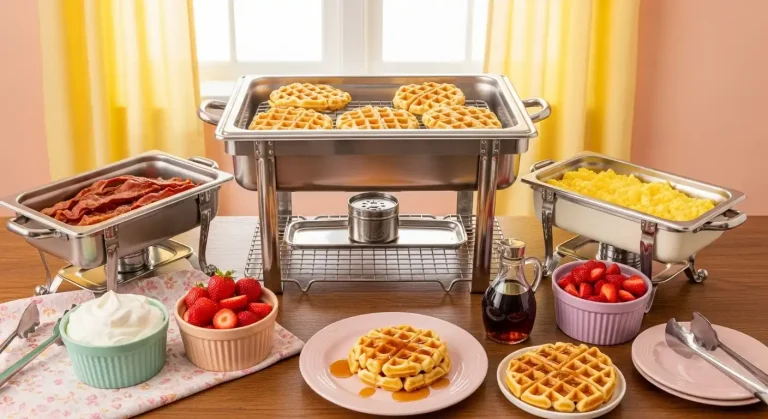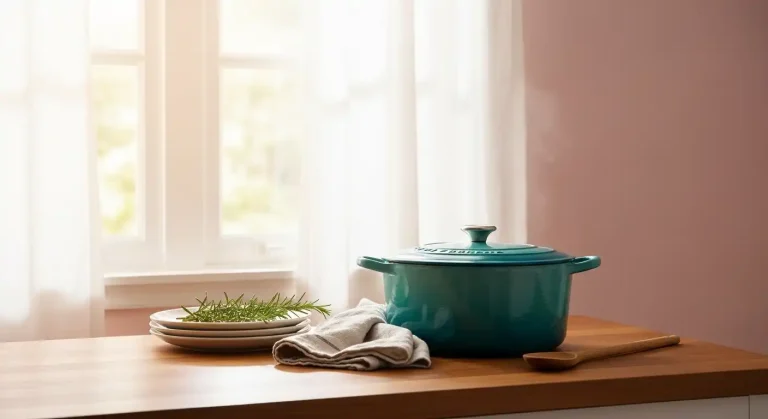French Oven Vs Dutch Oven: What’s the Difference?
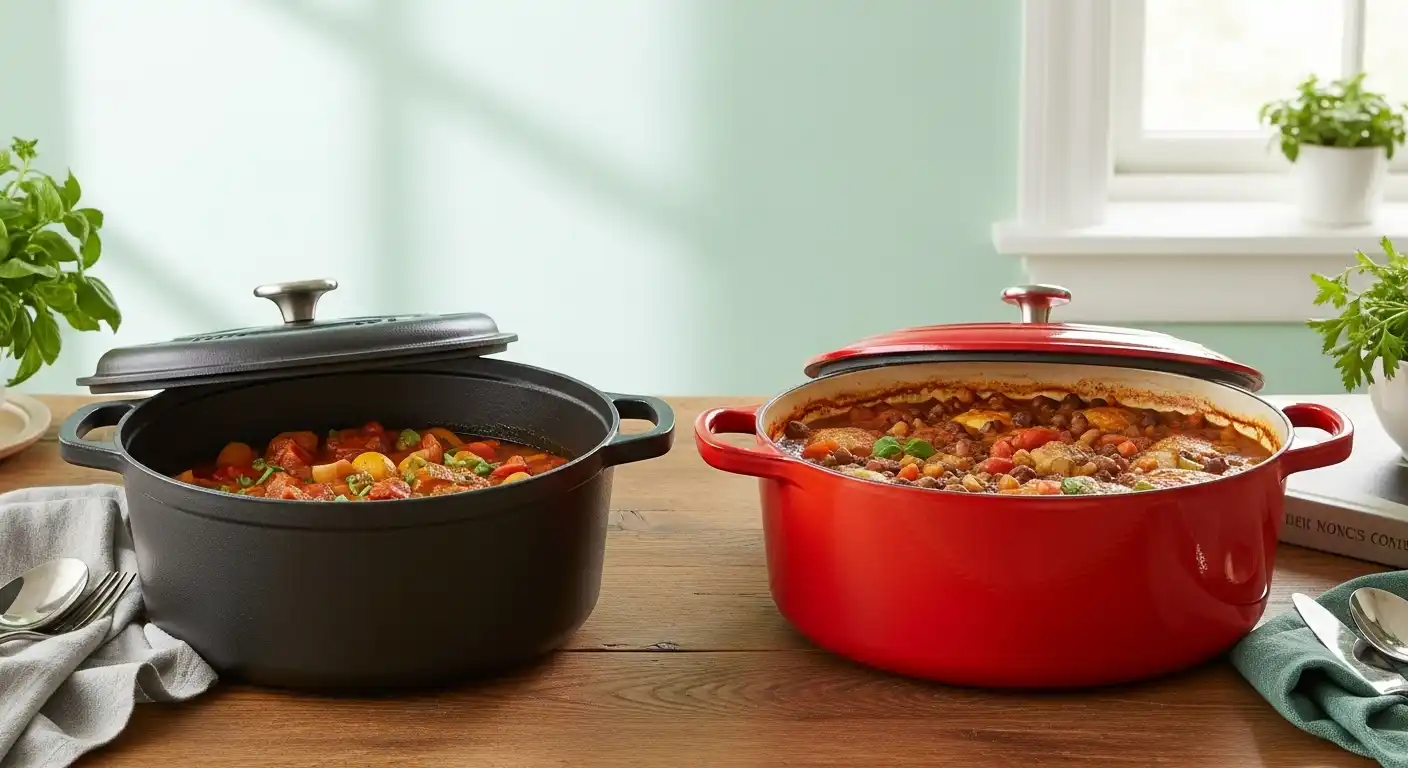
When it comes to versatile cookware, few pieces rival the charm and functionality of a French oven or Dutch oven.
These heavy, lidded pots are staples in kitchens worldwide, beloved for their ability to handle everything from slow-cooked stews to crusty artisan bread.
But what sets them apart? In this post, we’ll dive into the French oven vs Dutch oven debate to help you choose the right one for your cooking needs.
Whether you’re a home cook or a seasoned chef, understanding the differences between these two pots can elevate your culinary game. Let’s break it down.
What Is a Dutch Oven?
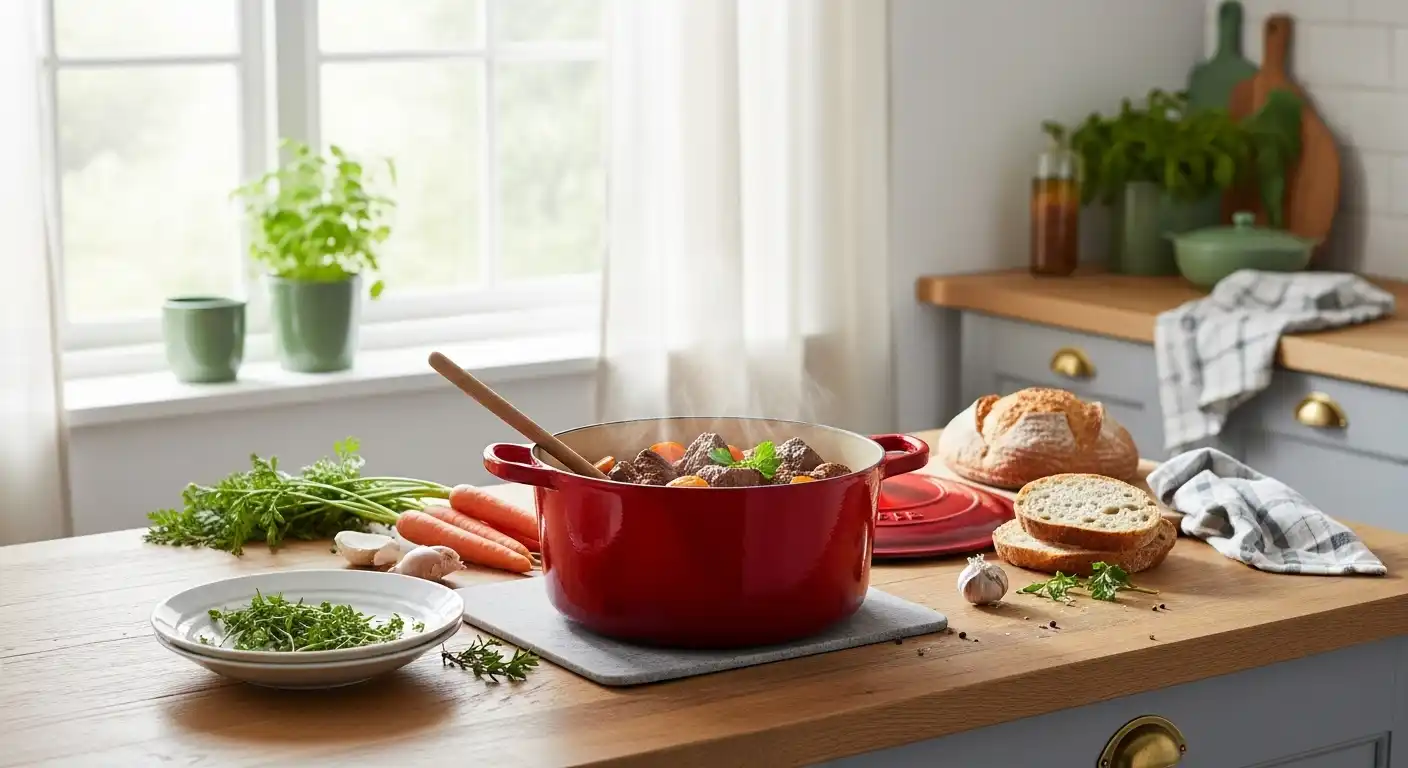
A Dutch oven is a heavy, thick-walled cooking pot with a tight-fitting lid, traditionally made from cast iron.
Its origins trace back to the Netherlands in the 17th century, where it was designed for cooking over open fires.
Dutch ovens excel at retaining and distributing heat evenly, making them ideal for slow cooking, braising, and baking.
They come in two main types: bare cast iron, which requires seasoning to maintain its non-stick surface, and enameled cast iron, which is low-maintenance and resistant to rust.
Their versatility shines in recipes like hearty soups, roasts, and even baking bread.
If you’re wondering about size, check out our guide on what size Dutch oven is best for a family of four.
What Is a French Oven?
A French oven is essentially a modern take on the Dutch oven, popularized by brands like Le Creuset.
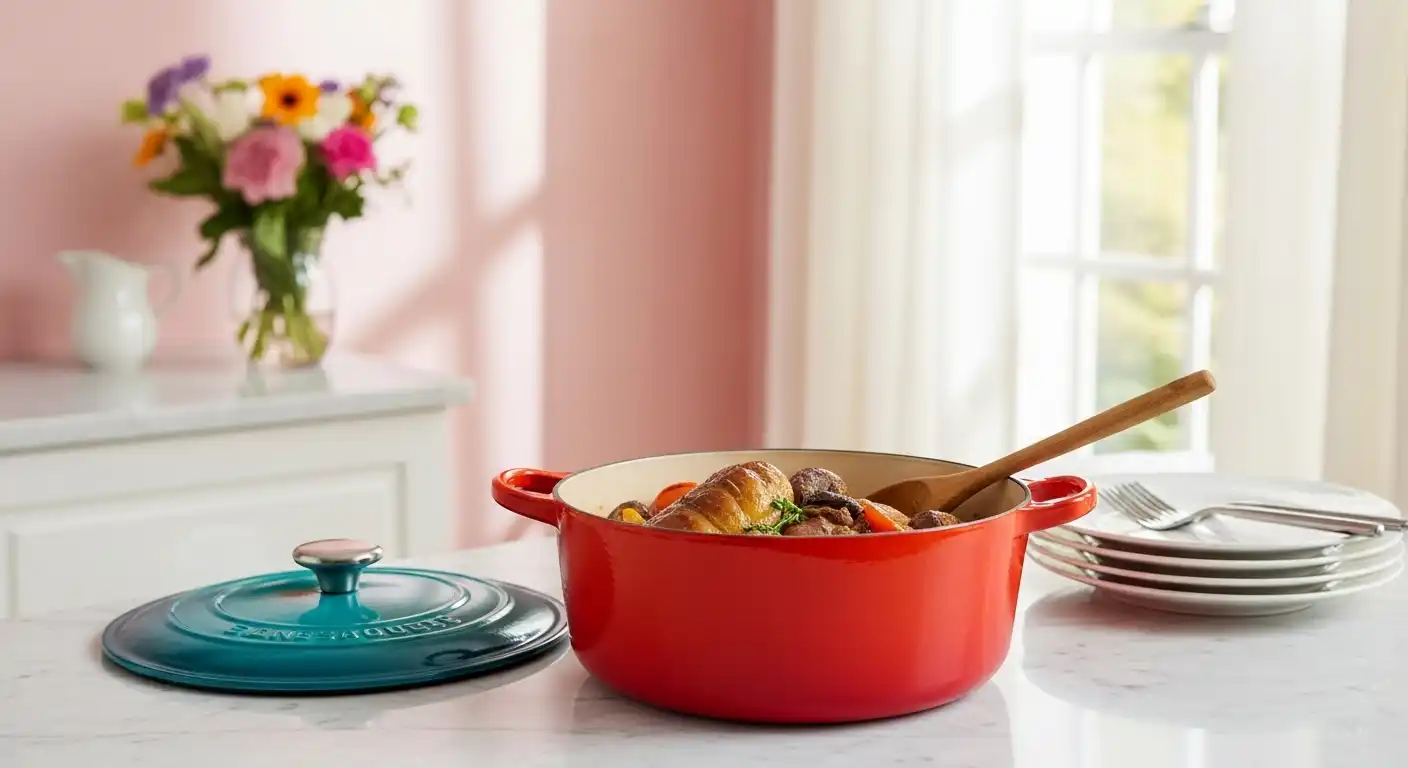
It’s typically made from enameled cast iron, featuring a smooth, colorful coating that’s both functional and aesthetically pleasing.
The term “French oven” is often a marketing distinction, emphasizing the pot’s French craftsmanship and elegant design.
Like Dutch ovens, French ovens are great for slow cooking, braising, and baking, but they’re exclusively enameled, eliminating the need for seasoning.
French ovens are a favorite for their durability and style, often transitioning seamlessly from stovetop to oven to table.
They’re perfect for dishes like coq au vin or cassoulet, embodying the essence of French cuisine.
French Oven Vs Dutch Oven: Key Differences
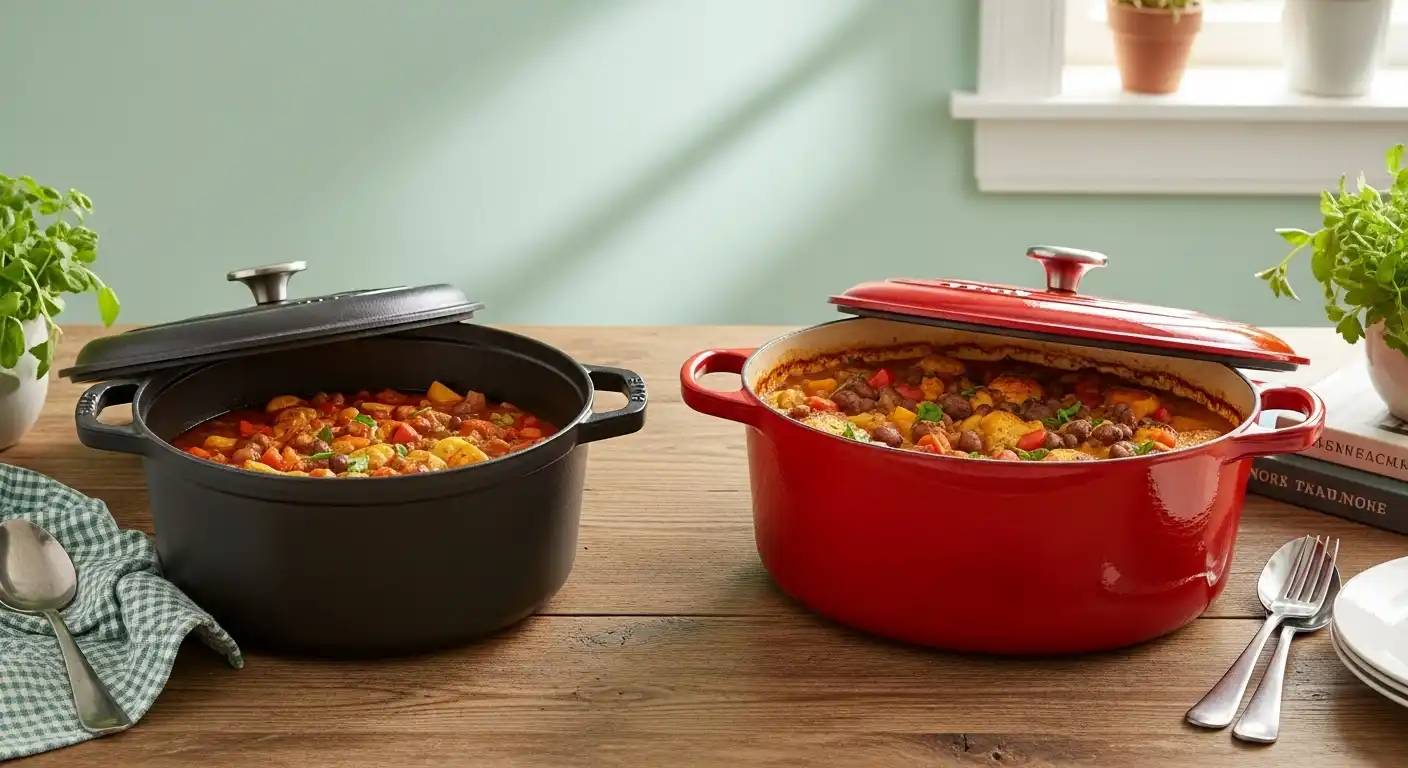
While French ovens and Dutch ovens share many similarities, there are subtle differences that can influence your choice. Let’s compare them across several factors.
Material and Construction
Dutch ovens are available in both bare and enameled cast iron.
Bare cast iron Dutch ovens, like those from Lodge, are budget-friendly but require regular maintenance to prevent rust.
French ovens, on the other hand, are always enameled. The enamel coating makes them resistant to chipping and staining, though they’re pricier.
If you’re curious about cleaning, our guide on cleaning a Dutch oven applies to both types.
Both pots are heavy and durable, designed to last a lifetime with proper care.
Maintenance and Care
Bare cast iron Dutch ovens need seasoning to maintain their non-stick properties and prevent rust.
This process involves coating the pot with oil and heating it, which some cooks enjoy as part of the ritual.
Enameled French ovens and enameled Dutch ovens are low-maintenance.
They don’t require seasoning, but you should avoid abrasive cleaners to preserve the enamel.
Wondering if you can put an enameled pot in the dishwasher? Check out our post on enamel Dutch oven care.
French ovens win for ease of use, but cast iron Dutch ovens offer a rustic charm.
Price Point
Dutch ovens, especially bare cast iron models, are generally more affordable.
Brands like Lodge offer high-quality options at a fraction of the cost of premium brands.
French ovens, with their enameled finish and designer appeal, come with a higher price tag.
Brands like Le Creuset or Staub are investment pieces, often costing several hundred dollars.
If budget is a concern, a bare cast iron Dutch oven is a great starting point. For style-conscious cooks, a French oven might be worth the splurge.
Aesthetic Appeal
French ovens are known for their vibrant colors and sleek designs, making them a kitchen showpiece.
They’re perfect for serving directly at the table, adding a touch of elegance to your meals.
Dutch ovens, particularly bare cast iron models, have a more utilitarian look.
Enameled Dutch ovens can rival French ovens in style but often lack the same range of colors.
If your kitchen doubles as a display space, a French oven’s aesthetic edge might sway you.
Cooking Performance
Both pots excel at heat retention and even cooking, thanks to their cast iron construction.
They’re oven-safe (check if Dutch oven lids are oven-safe) and can handle high temperatures for searing or roasting.
The enamel coating on French ovens makes them slightly less prone to sticking, especially for acidic dishes like tomato-based stews.
Bare cast iron Dutch ovens, when properly seasoned, perform just as well but require more attention.
For most recipes, you’ll notice little difference in performance between the two.
French Oven Vs Dutch Oven: Which Is Better for You?
Choosing between a French oven and a Dutch oven depends on your cooking style, budget, and preferences. Here’s a quick guide to help you decide.
Go for a Dutch Oven If:
- You’re on a budget and don’t mind seasoning a bare cast iron pot.
- You love the rustic charm of traditional cookware.
- You want a versatile pot for camping or open-fire cooking.
A bare cast iron Dutch oven is a workhorse, perfect for everything from chili to roasting.
Go for a French Oven If:
- You prefer low-maintenance cookware that’s ready to use out of the box.
- You want a stylish pot that doubles as serveware.
- You cook acidic dishes frequently and want to avoid seasoning hassles.
A French oven’s enamel coating and chic design make it a favorite for modern kitchens.
Common Uses for Both Pots
Both French ovens and Dutch ovens shine in a variety of recipes. They’re ideal for:
- Slow Cooking: Think braised short ribs, beef bourguignon, or slow-cooker-style dishes.
- Baking: Their ability to trap steam makes them perfect for no-knead bread.
- One-Pot Meals: From soups to stews, these pots handle it all.
If you’re exploring alternatives, check out our comparison of Dutch oven vs casserole dish for other options.
Can You Substitute One for the Other?
In most cases, yes! French ovens and Dutch ovens are interchangeable for recipes requiring slow cooking or even heat distribution.
The main difference lies in maintenance and aesthetics, not functionality.
If you don’t own either, you might wonder about other substitutes. Our post on substitutes for a Dutch oven offers creative alternatives.
Final Thoughts
The French oven vs Dutch oven debate boils down to personal preference.
Both are exceptional tools that can transform your cooking, whether you’re simmering a stew or baking crusty bread.
If you value affordability and tradition, a Dutch oven—especially a bare cast iron one—might be your pick.
If you’re drawn to style and convenience, a French oven’s enameled finish could be the way to go.
Whichever you choose, proper care will ensure your pot lasts for generations. Happy cooking!

